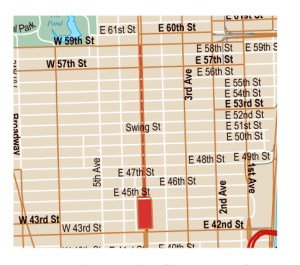L&L Holdings’ David Levinson on New 425 Park Avenue Architectual Designs
By Jotham Sederstrom November 7, 2012 7:00 am
reprintsLord Norman Foster this month won the contest to design the first new office tower in almost 50 years on Park Avenue, beating three other finalists for the opportunity to make a mark on the row of 30 Class A buildings in the submarket, which already boasts two of the city’s most famous modernist classics.
L&L Holding Co. late last month chose Foster + Partners’ design for an illuminated 41-story tower at 425 Park Avenue, a few blocks north of the Seagram Building and Lever House, 1950s buildings that helped establish the International Style of glass and steel construction. Foster’s tapered steel-frame tower allows for three gradated tiers of column-free floors, separated by tree-lined terraces where employees will take breaks and exchange ideas, as well as a ground-level public plaza.

The opportunity stemmed from the expiration of the ground lease at the property, which allows L&L to empty the existing building as of May 2015 and replace it. “It was a fluke,” said David Levinson, L&L Holding’s chairman and chief executive officer.
L&L contacted 11 architectural firms, nine of which submitted proposals. The field was narrowed to Foster, Lord Richard Rogers’ Rogers Stirk Harbor & Partners, Rem Koolhaas’s OMA and Zaha Hadid Architects. Each firm was asked to create both a scheme in keeping with existing zoning that maintains a quarter of the existing floor area and a scheme regardless of current restrictions.
The request for proposals also called for: flexible floorplates, column free-spans and energy efficiency; a “contemporary expression” worthy of the Park Avenue address; spaces conducive to cultural interaction and creativity; and attention to budget.
All four designs were produced in collaboration with L&L, which also consulted with experts including Municipal Art Society President Vin Cipolla, Real Estate Board of New York Chairwoman Mary Ann Tighe and Jennifer Raab, the president of Hunter College. In one “marathon” two-day session, Mr. Levinson said L&L worked and dined with each of the four potential partners.
“We weren’t just picking a design,” he said. “We were picking an architect.”
Mr. Levinson said construction would proceed in 2015, two years before the city’s proposed Midtown East zoning would take effect and ease constraints on new construction in the area. The plan meets the 25 percent floor-space requirement, and the building’s height isn’t an issue, he said. The ground-floor plaza may require city approval in advance of the rezoning. The alternative, allowable under current rules, would be to enclose the plaza space and lease it to retailers, Mr. Levinson said.
Mr. Levinson predicted that the building, with Central Park views from the upper 20 floors, will attract a mix of international companies desiring a prestigious New York address, private equity firms, hedge funds and high-end fashion conglomerates.
The Park Avenue submarket had a vacancy rate of 9.9 percent in the third quarter, according to Cushman & Wakefield (CWK). Rents averaged $79.30 a foot. An architectural trophy may command a premium, however: rents at the Seagram Building reportedly have exceeded $100 a foot.


